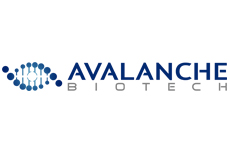
Avalanche Biotechnologies said it raised nearly $5.7 million of a hoped-for $6.1 million equity round for the age-related macular degeneration treatment it’s developing.
The Avalanche technology is a drug-delivery system designed to trigger the production of a therapeutic protein by the body’s own cells, creating what the company calls a "Bio-Factory" in the patient’s eye, according to its website.
The funding came from 16 unnamed investors, according to a regulatory filing.
Avalanche uses a virus called adeno-associated virus to induce the production of the protein by removing viral genes from the AAV organism and replacing them with genes that trigger the protein’s production, according to the website.
"AAV can infect a variety of retinal cell types and remain stable, resulting in long-term therapeutic protein expression in a variety of retinal cell types. In clinical studies, AAV appears safe and well-tolerated when injected into the retina," according to the website.
In June, a pre-clinical study published in the journal Science Translational Medicine showed that the technique restored vision in mice with retinoschisis and Leber’s congenital amaurosis. And although the product failed to consistently penetrate the deep cell layers of macaque monkey retinas, it did penetrate cells of the fovea, a portion of the retina that’s crucial to sharp detail vision.
"That’s a really important region to protect," lead researcher David Schaffer of the University of California, Berkeley told The Scientist. "For the quality of life of patients who are going blind, if you can at least protect the fovea that would be a huge improvement."
"This is a beautifully planned, executed, and powerfully presented paper,"Jean Bennett, a professor of ophthalmology at the University of Pennsylvania in Philadelphia, told the magazine. "It shows the results of a very clever system to evolve AAV to target cells in the retina efficiently from an intravitreal injection."

